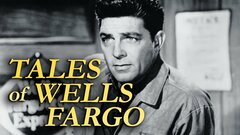At the height of her acting career, Ann Rutherford had every teenage boy in America wishing she were his girlfriend. Her sweet portrayal of Polly Benedict, the charming and loyal girlfriend to Mickey Rooney's exuberant and lovestruck Andy Hardy in films such as "You're Only Young Once" (1937) and "Love Finds Andy Hardy" (1938), cemented Rutherford's status as an all-American sweetheart. Her universal appeal - boys loved her and girls wanted to be her - launched the actress' career and made her a marquee name in movie classics such as "A Christmas Carol" (1938) and "Pride and Prejudice" (1940).
Yet no other film in Rutherford's extensive résumé held the enduring popularity and cultural impact as "Gone with the Wind" (1939), a cinematic masterpiece told through the eyes of Southern belle Scarlett O'Hara (Vivien Leigh). Rutherford played Scarlett's optimistic younger sister Carreen in the film that crossed genres and went on to be considered one of the greatest movies of all time.
After making a few more films in the 1940s, she later acted in television until retiring from show business in the 1970s. In 2009, Rutherford celebrated the 70th anniversary of "Gone with the Wind," as one of that cast's - and the Golden Age's - last remaining survivors before her death in 2012.
Therese Ann Rutherford was born on Nov. 2, 1920 (some sources say 1917) in Vancouver, British Columbia, Canada to John Rutherford, a former Metropolitan Opera singer, and Lillian Mansfield, a silent screen actress. Her family moved shortly after her birth to California, where the future star attended Fairfax High School. It was apparent even at an early age that the pretty young woman was destined for a creative career. Rutherford was a star debater at her school, played the piano, and dabbled in sculpting. She made her stage debut in 1925 and began her acting career by appearing in local theater productions and on radio shows.
Rutherford first appeared onscreen in 1935 with a handful of feature films, including "Waterfront Lady" and "The Fighting Marines." That year also saw the young actress playing opposite Gene Autry in the Western classics "Melody Trail" and "The Singing Vagabond." Her work with Autry, "The Singing Cowboy," established her as one of the most highly sought after leading ladies in Western films. She soon acted opposite John Wayne, another icon from the genre, in 1936's "The Oregon Trail" and "The Lawless Nineties." Rutherford showed maturity well beyond her age and committed to all her roles, even when it required her to learn to swim underwater, which she mastered - with the help of Larry "Buster" Crabbe - for the 1936 feature "Down to the Sea."
Major movie studios soon took notice of Rutherford who, at 17 years old, signed with MGM. The studio launched the young actress' career into orbit by casting her in the role of a lifetime - Polly Benedict in the "Andy Hardy" film series. While the role of Polly, Andy's girlfriend, was initially played by Margaret Marquis in "A Family Affair" (1937), Rutherford stepped into the role in "You're Only Young Once" and proceeded to play her in the next 12 immensely popular films. Rooney played Andy, a teenager living in the fictional town of Carvel who bumbles his way through a series of romantic misadventures. Rutherford's doe-eyed charm and her picture perfect onscreen chemistry with the delightful actor turned her into America's sweetheart.
As the ever-faithful Polly, the actress created a new image of the modern teenage girl: sweet but not a goody-goody, alluring but neither lewd nor flashy. Although the relationship between Andy and Polly had its rocky moments - he often became entangled with other girls - including Judy Garland and Lana Turner among them - which was the focus of the fourth film "Love Finds Andy Hardy." Despite this, the couple always managed to work it out in the end.
Rutherford's girl-next-door appeal on and off screen was extremely appealing to Depression-era audiences. The actress received heaps of fan mail, often attached with photos of her admirers posing next to a family jalopy that resembled the one Andy drove in the films. College fraternities even named her as their official sweetheart. Rutherford was well aware that her popularity came with some power.
While under contract with MGM, the actress received a hefty raise from studio mogul Louis B. Mayer while some stars - including Rooney - failed to do so at the height of their careers. Rutherford told Mayer she had promised her mother a new house, showed him how little she had in her checkbook, and received her raise. She appeared in 1942's "Andy Hardy's Double Life" at the age of 22, her last time playing the much-loved character Polly. However, Rutherford had established another film character, the tough and straightforward Carol Lambert opposite Red Skelton's wisecracking Wally "The Fox" Benton, in a trio of comedic mysteries: "Whistling in the Dark" (1941), "Whistling in Dixie" (1942), and "Whistling in Brooklyn" (1943).
While Rutherford's acting résumé included some of the most beloved films of all time, none matched the scope and grandeur of 1939's "Gone With the Wind," considered a masterpiece from Hollywood's Golden Age. The actress played Carreen O'Hara, one of three daughters born to a wealthy plantation owner during the Civil War. Her headstrong older sister Scarlett (Leigh) was the central character in the film epic that also starred Clark Gable, Leslie Howard and Olivia DeHavilland. It was reported that Judy Garland - Rutherford's "Andy Hardy" series co-star - was initially offered the role of Carreen but turned it down because she was filming "The Wizard of Oz" that same year.
"GWTW" was also a co-production and studio head Mayer was apprehensive to lend out Rutherford's contract to the film's producer David O. Selznick at Selznick International for such part that he described as a "nothing role." A fan of the book, Rutherford resorted to tears, begging Mayer with the argument that with this film, there was "no nothing part for anybody!" Mayer acquiesced yet again and Rutherford scored the role.
Although "GWTW" focused mainly on the complicated relationship between Leigh and Gable's characters, Rutherford's encouraging Carreen captivated audiences whenever she stepped foot on screen, whether criticizing Scarlett for dancing with too many young men at the plantation barbecue or working the plantation fields to help rebuild Tara, the family's beloved mansion.
At nearly four hours long, "Gone With the Wind" transcended all film genres, was a commercial success, and won a record-making 10 Academy Awards, including Best Picture, in 1940. In 1998, The American Film Institute named "Gone with the Wind" one of the Top 100 Films of all time behind only "Citizen Kane" (1941), "Casablanca" (1942), and "The Godfather" (1972).
Rutherford continued to work for MGM and appeared in a handful of non-"Andy Hardy" projects that eventually became classics in their own right. The actress played the hauntingly beautiful Spirit of Christmas Past opposite Reginald Owen as Ebenezer Scrooge in "A Christmas Carol" and portrayed the immature and self-involved Lydia Bennet in "Pride and Prejudice." She left MGM in the early 1940s, yet remained a steady working actress, starring in the comedy "Bedside Manner" (1945) and the fantasy romance hit "The Secret Life of Walter Mitty" (1947). She also raised a family with first husband David May of the May Company retail chain, whom she married in 1942 and had two children with. The couple divorced in 1953 and that same year, she married husband No. 2, "Batman" (ABC, 1966-68) producer William Dozier.
Rutherford was the subject of a fictional book by Katherine Heisenfelt titled Ann Rutherford and the Key to Nightmare Hall (1942). The young adult novel, about a young "Nancy Drew"-type crime solver, shared the actress' name and appearance yet had no connection to her whatsoever. Her film career slowed down after "The Secret Life of Walter Mitty" yet there was another medium waiting to welcome the talented star.
She made her small screen debut on the anthology series "Nash Airflyte Theater" (CBS, 1950-51), acting opposite Otto Kruger in the episode titled "The Doll in the Pink Silk Dress.
"Rutherford was a frequent guest star on the mystery drama series "Perry Mason" (CBS, 1957-1966), playing a variety of characters. Rutherford returned to feature films in the 1972 thriller "They Only Kill Their Masters," starring James Garner and Katharine Ross. The movie, released by Rutherford's former studio MGM, was ironically filmed on the old "Andy Hardy" set. The veteran actress also made a comedic splash playing Bob Hartley's (Bob Newhart) mother-in-law Aggie on the classic sitcom "The Bob Newhart Show" (CBS, 1972-1978).
She made a cameo as a studio secretary in "Won Ton Ton, the Dog Who Saved Hollywood" (1976), her final film before retiring from acting. Many years later, James Cameron offered Rutherford the role of Rose DeWitt Bukater in "Titanic" (1997) but turned it down. The role of old Rose eventually went to fellow Golden Ager, Gloria Stuart.
While retired from acting, Rutherford continued supporting "Gone With the Wind" at every opportunity, making special appearances to meet with fans all over the world. She commemorated the classic film's 70th anniversary at a November 2009 event held in Marietta, GA. Joining Rutherford were castmates Mickey Kuhn (Beau Wilkes), Patrick Curtis (baby Beau Wilkes), Greg Geise (infant Bonnie and infant Beau) and Geneva Miller Roberts (extra from the barbecue scene). The movie's biggest name survivor, Olivia DeHavilland (Melanie Hamilton Wilkes), was unable to attend, due to living overseas in Paris. Only four years after her onscreen big sister Evelyn Keyes had died, Rutherford passed away on June 11, 2012 at her Beverly Hills home, leaving DeHavilland the sole surviving major cast member of "Gone with the Wind."
By Marc Cuenco






















































































































































































